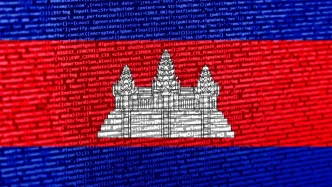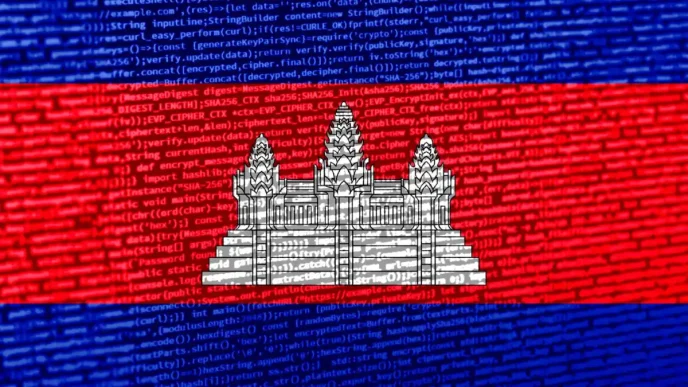Southeast Asia, a region of over 630 million people, is rapidly becoming the beating heart of K-pop’s global dominance. Once a peripheral market, it now drives the industry’s expansion through a potent mix of digital connectivity, economic growth, and an insatiable appetite for Korean cultural exports. From Thai superstar Lalisa Manoban—known globally as Lisa of Blackpink—to emerging talents from Indonesia, Vietnam, and the Philippines, the region is not just consuming K-pop; it’s reshaping it.
This shift is powered by social media platforms like TikTok, where Southeast Asian fans engage with K-pop at levels far surpassing global averages. Their influence is undeniable: viral trends born in Bangkok or Jakarta often ripple across continents, propelling obscure acts to international fame. As Korean entertainment agencies increasingly scout talent from the region, Southeast Asia’s role as both a market and a talent hub signals a new chapter for K-pop—one where the balance of cultural power is tilting south.
A Digital Ecosystem Amplifying K-Pop’s Reach
Southeast Asia’s digital landscape is a key driver of this phenomenon. With rapid economic growth—averaging 4 to 5 percent annually across the region—disposable incomes are rising, particularly among the youth. This demographic, often aged between 10 and 29, forms a core audience for K-pop, spending heavily on streaming services, merchandise, and concert tickets. A 2024 joint study by TikTok and market research firm Kantar revealed that TikTok users in Indonesia, Thailand, and Vietnam spend significantly more on Korean cultural products than non-users. In Indonesia alone, three out of five people pay to stream Korean music, with listening hours among the highest globally.
TikTok, in particular, has emerged as a game-changer. “When something goes viral on TikTok in Southeast Asia, it often spreads beyond Asia,” said music critic Lim Hee-yun in a recent interview. The platform’s short-form content has turbocharged K-pop’s visibility, with regional fans not only consuming but also creating trends that shape the genre’s trajectory. The annual Year on TikTok report for 2023 showed five of the top ten global acts were K-pop groups, a figure that rose to seven in 2024. Groups like Blackpink, BTS, and NewJeans owe much of their global streaming numbers to Southeast Asian engagement.
Lim Hee-yun points to the example of Wave to Earth, a Korean indie band initially overlooked in their home market. After going viral in Thailand, they embarked on a world tour and now boast more Spotify followers than IU, one of South Korea’s biggest solo artists. Such stories underscore how Southeast Asia’s digital clout is rewriting the rules of music stardom.
Thailand: The Trailblazer of K-Pop Talent
Thailand has long been a pioneer in supplying K-pop with global icons, none more prominent than Lisa of Blackpink. Since her debut in 2016 under YG Entertainment, Lisa has shattered records, amassing over 105 million Instagram followers—earning her a Guinness World Record as the most-followed K-pop artist on the platform. Her performance at the Academy Awards on 2 March 2025 further cemented her status as a cultural ambassador, bridging K-pop with Hollywood.
Lisa’s success has inspired a generation of Thai trainees, eager to follow in her footsteps. “Trainees always have role models, and in Thailand, there are already many successful cases—especially Lisa, a powerful example,” a YG Entertainment official noted. The agency has since debuted two more Thai idols, Pharita and Chiquita, in the group Baby Monster, while other Thai stars like Natty of Kiss of Life, Minnie of (G)I-dle, and Ten of NCT continue to thrive under major Korean labels.
This talent pipeline is no accident. Thailand’s established presence in K-pop reflects a cultural affinity for performance arts, coupled with a robust fanbase that ensures Bangkok remains a must-stop city for world tours. Lisa’s influence extends beyond music; she’s a symbol of Southeast Asian representation in an industry once dominated by Korean, Chinese, and Japanese faces.
Indonesia: An Untapped Giant Awakens
While Thailand leads in talent exports, Indonesia—home to 270 million people—is emerging as a colossal market and potential talent pool. With a third of its population in the prime K-pop demographic, demand for Korean music is soaring. Jakarta now rivals Bangkok as a key stop for world tours, and last year, Indonesia ranked third in Korean music imports, trailing only Japan and Taiwan, according to Luminate’s 2024 Year-End Music Report.
Historically underrepresented in K-pop, Indonesia is beginning to make its mark. Last month, SM Entertainment—one of Korea’s “Big Four” agencies—debuted Carmen in the group Hearts2Hearts, marking the first Indonesian trainee to join such a prestigious label. While SM insists Carmen’s selection was based on vocal fit rather than market strategy, her inclusion highlights Indonesia’s growing importance. Other Indonesian idols, like Dita of Secret Number and Kim of VVUP, are also gaining traction, though their numbers remain small compared to Thailand’s output.
The potential is staggering. TikTok data shows that 31 percent of Indonesian users consume K-pop daily—2.3 times more than non-users. As agencies take note, Indonesia could soon rival Thailand as a source of K-pop talent, especially if cultural and linguistic barriers are bridged through targeted training programs.
Vietnam and the Philippines: Rising Stars
Beyond Thailand and Indonesia, Vietnam and the Philippines are carving out their own spaces in K-pop. Vietnam’s most notable export is Hanni of NewJeans, though her Australian upbringing and dual nationality slightly blur the narrative of local talent. More recently, male idols like Hanbin of Tempest and Kien of ARrC have debuted, marking a milestone for Vietnamese representation in a predominantly female-led export trend.
The Philippines, meanwhile, is gaining ground with rookie group UNIS, featuring Elisia and Gehlee, who debuted in March 2024. Elisia’s victory in the TV competition “My Teenage Girl”—the first foreign winner of such a program—drew significant attention, culminating in sold-out concerts in Manila and Cebu last October. Filipino fans, known for their passionate engagement, are increasingly visible on social media, amplifying K-pop’s reach through user-generated content.
A Strategic Pivot for K-Pop Agencies
Korean entertainment companies, renowned for their data-driven approach, are acutely aware of Southeast Asia’s value. Beyond market size, the region offers a cultural synergy: its youth are tech-savvy, trend-hungry, and eager for global connectivity—traits that align perfectly with K-pop’s glossy, hyper-connected aesthetic. Agencies are not merely welcoming Southeast Asian idols; they’re beginning to see them as essential to sustaining global growth.
This pivot raises questions about the future. Will K-pop’s identity—rooted in Korean language and cultural motifs—evolve as more non-Korean idols rise to prominence? Could Southeast Asian influences, from musical styles to visual aesthetics, begin to shape the genre itself? While speculative, such outcomes seem plausible if current trends hold, though no firm evidence yet confirms a wholesale shift.
Challenges Amid the Boom
Despite the optimism, challenges loom. Language barriers and cultural differences can complicate training and integration for Southeast Asian idols, often requiring years of adaptation in Korea. Moreover, while social media amplifies reach, it also exposes artists to intense scrutiny and pressure, particularly in markets as digitally active as Southeast Asia. Agencies must navigate these dynamics carefully to avoid burnout or backlash.
There’s also the risk of market saturation. As more idols from the region debut, competition intensifies, potentially diluting individual impact. Yet, for now, the momentum is undeniable: Southeast Asia is not just a fanbase but a creative force, fueling K-pop’s next wave with talent, engagement, and raw digital power.
A New Cultural Frontier
K-pop’s journey from a niche Korean export to a global juggernaut has always been about adaptation. Southeast Asia, with its vibrant digital ecosystems and youthful energy, is the latest frontier in this evolution. From Lisa’s record-breaking feats to Carmen’s historic debut, the region is proving that its influence extends far beyond consumption—it’s a wellspring of talent and trends that could define K-pop’s future.
As TikTok continues to amplify voices from Jakarta to Manila, and as agencies double down on regional scouting, one thing is clear: Southeast Asia isn’t just riding K-pop’s wave—it’s steering the ship. For an industry built on reinvention, this partnership may be the key to unlocking the next decade of global success.














